Necessary material to start calligraphy
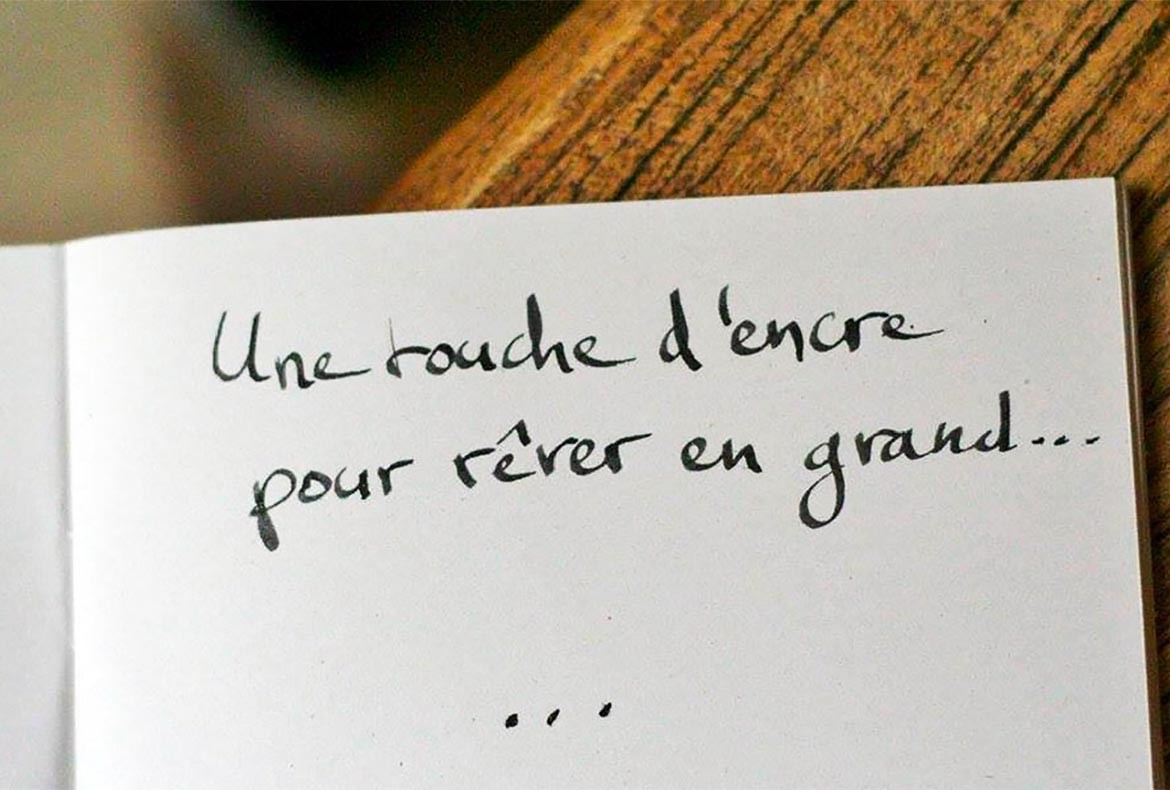
The necessary material for writing or calligraphy is composed of a dip pen, metallic nibs, ink and paper.
Dip Pen
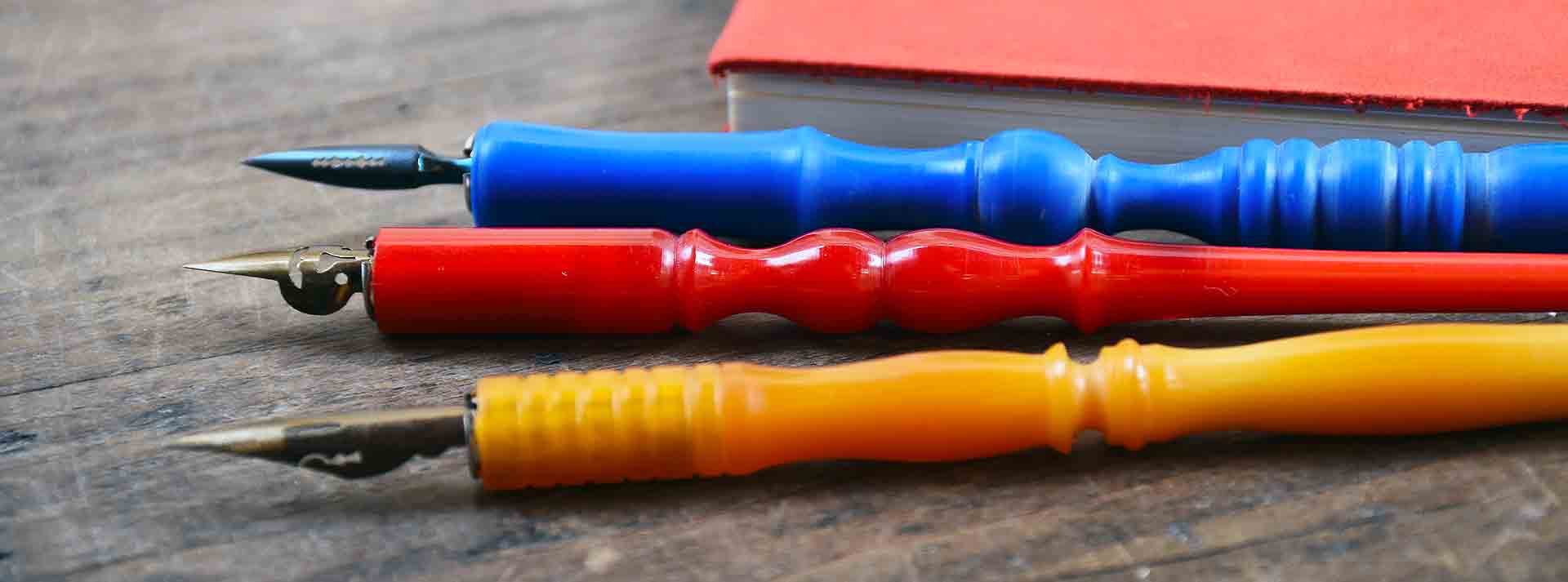 |
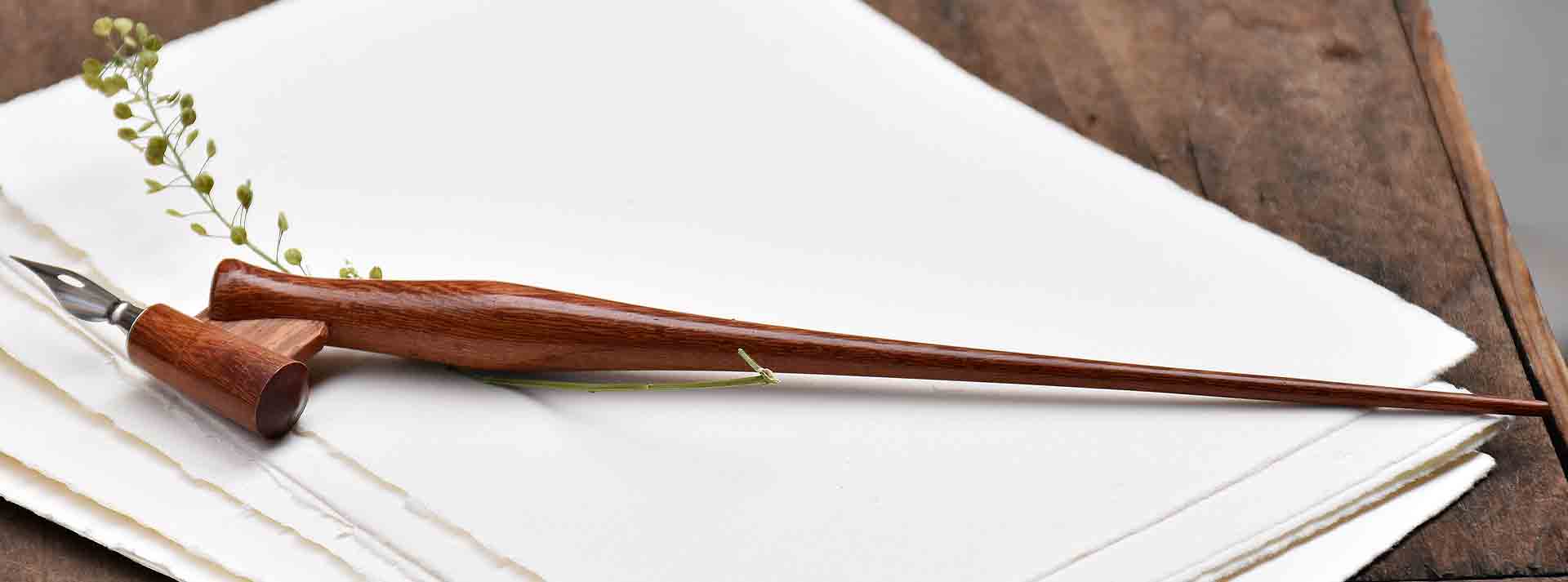 |
It succeeded the quill and was ousted by the use of the fountain pen in the 1960s ... It remains, however, the main tool of any calligrapher. It is made of a handle at the end of which is inserted a metallic nib that is dipped in ink to write, calligraphy and draw. There are two models of pen holder:
The most common straight dip penholder.
And the oblique dip penholder: it is a tool used mainly for Spencerian and English writing, also called Copperplate. These writings require a writing angle of 45°. At the time, there were angled nibs that could be inserted on a straight penholder in order to respect this writing angle. These are no longer manufactured anywhere, it is the pen holders that have adapted.
There is a wide choice of straight and angled penholder, in wood, pewter, Galalith, sometimes even old models in ivory or silver! Whether straight or angled, old or new, it is usually possible to fit any nib on a pen holder. (Some American or British brands have their own standard of nib holder and nib, but this is quite rare all the same.)
Nibs
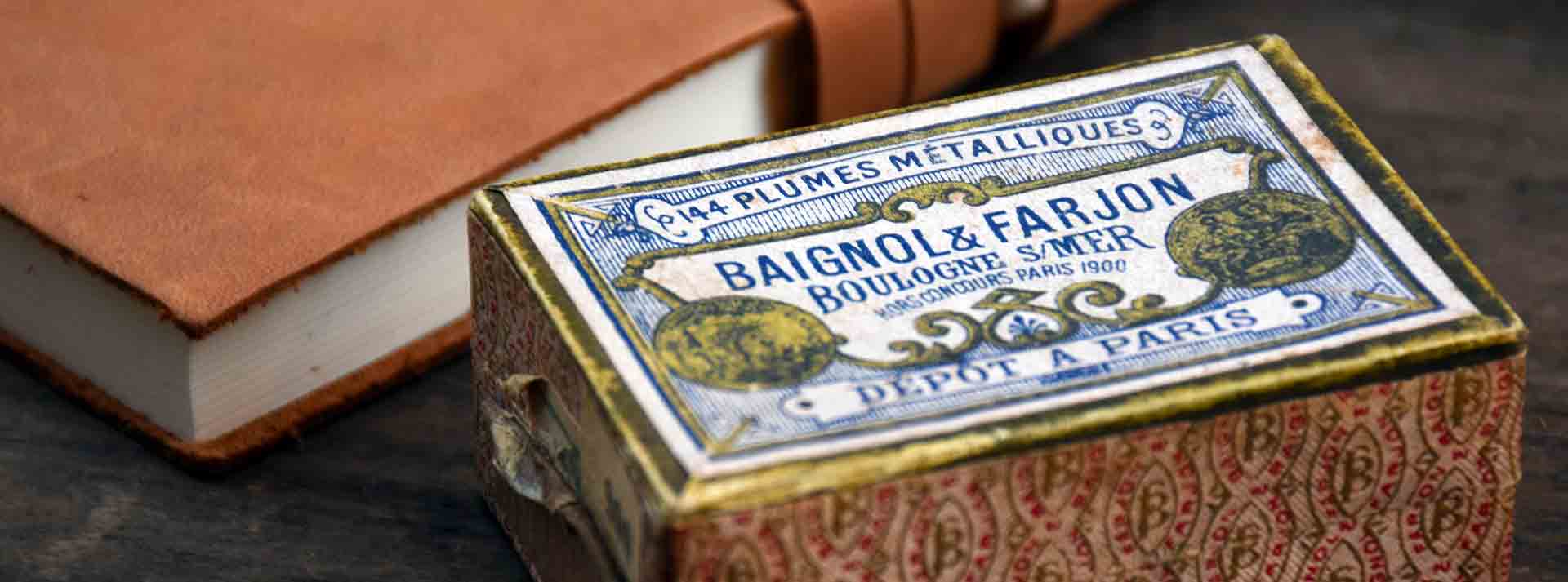 |
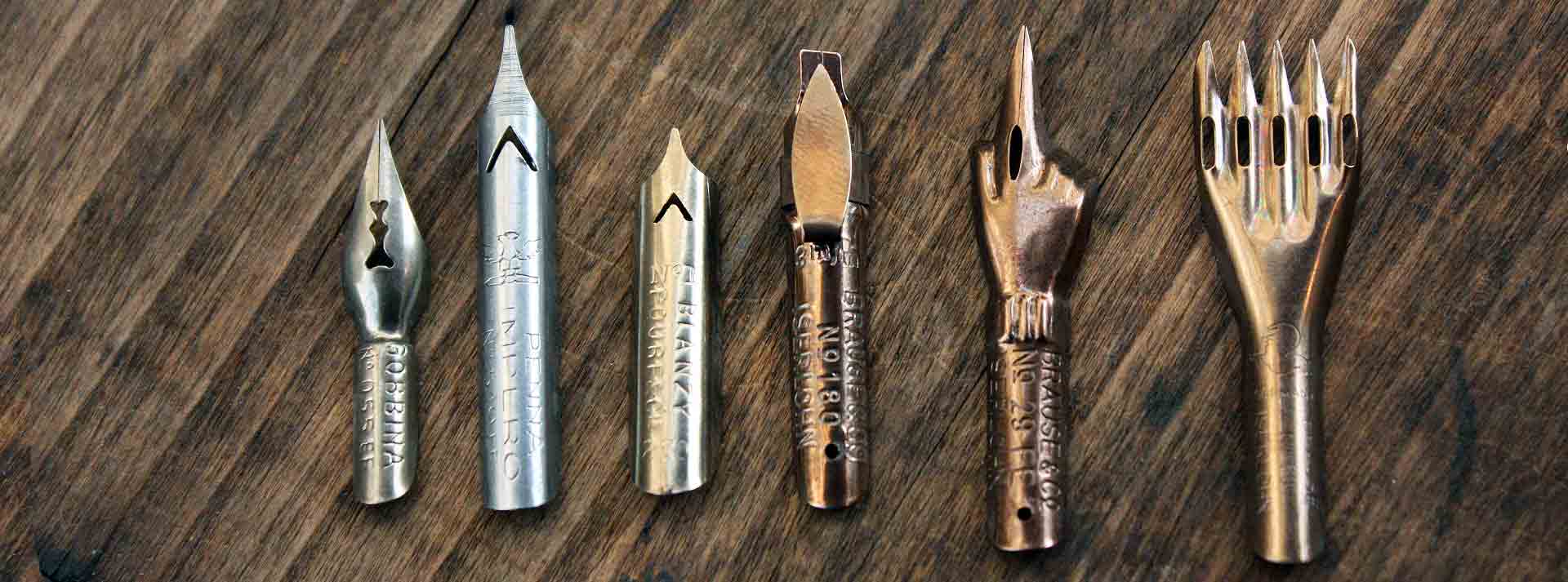 |
There are dozens of different brands and shapes. It is sometimes difficult to choose between the old nibs that are no longer manufactured, the current ones made in France, Japan or the United Kingdom.
They each have their own little character: extra-fine, hard, wide, flexible ... The main distinction is the shape of the nibs: pointed or bevelled. We will choose one rather than the other depending on the desired writing.
Pointed nibs for English writing, the American spencerienne, pointed Chancellor Each nibs allows you to make full and thin lines, more or less marked.
Bevelled nibs for the following writings: chancellor, rustica, unciale, gothic. For beveled nibs the difference will be on the size of the nib to write more or less wide.
In general, the choice is quite personal! The ideal is to try several of them in order to understand how they work. L'Ecritoire offers a set of 4 different pointed nibs to start writing with a pen.
A few tips for maintaining nibs:
- The new nibs are covered with a protective coating. It is advisable to pass them quickly under a flame to burn this coating.
- Nibs tend to rust if not taken care of. This is why it is important to dry them well after each use with a small dry cloth.
Ink
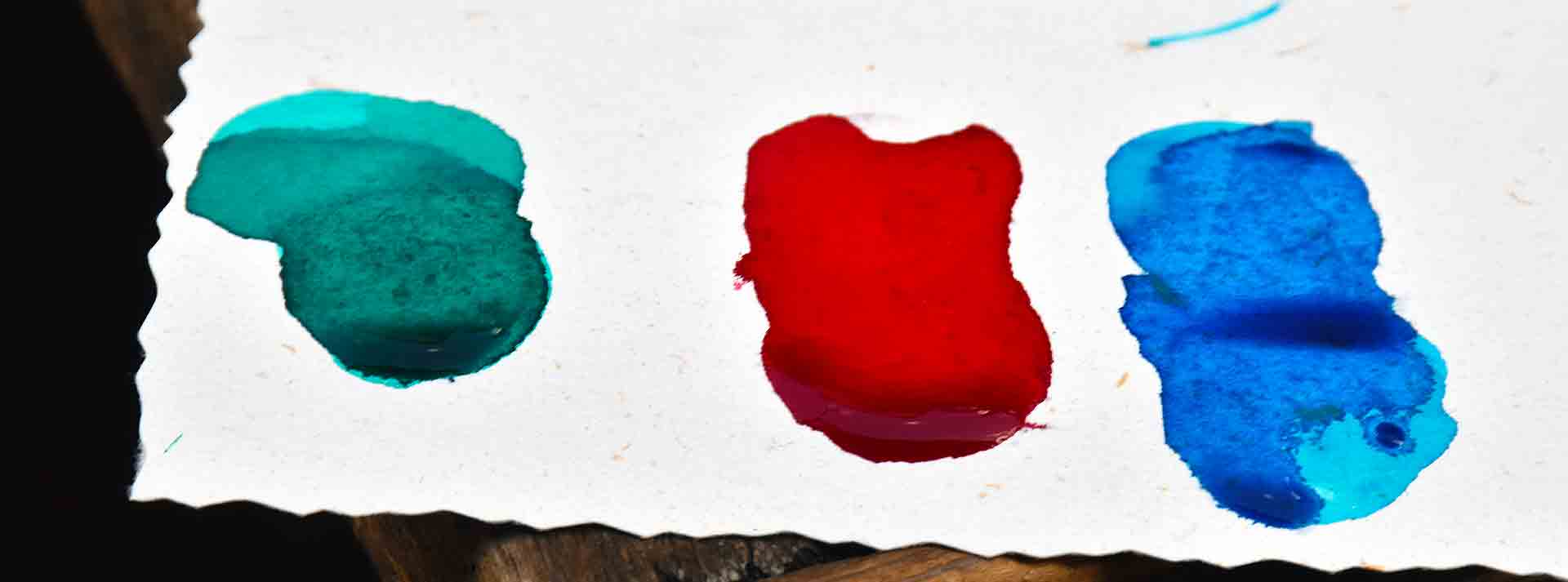 |
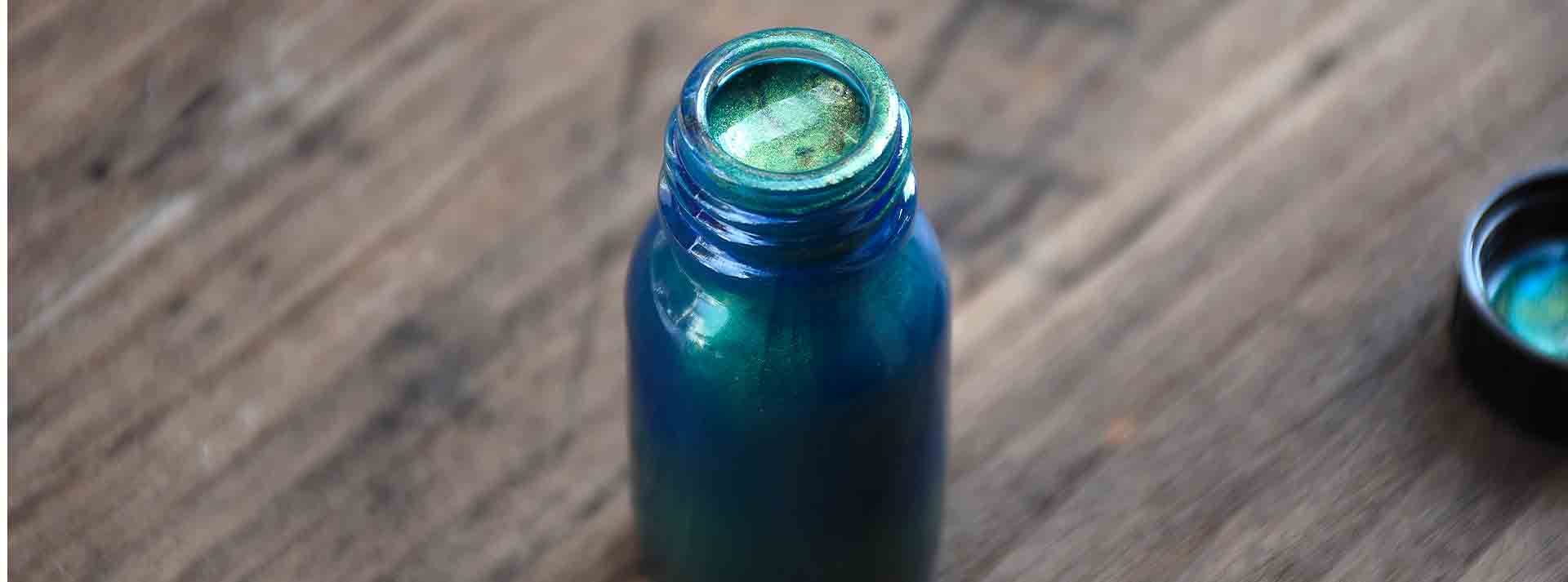 |
What is interesting with calligraphy is that it is possible to use so-called classic ink but also India ink, watercolor or even gouache. The rule is simply to clean your nibs well after use.
- Classic ink is very easy to use, often with a wide choice of bright and vibrant colors. It is fluid and made from water, and can often be used in both fountain pens and dip pens.
- Calligraphic ink is also very easy to use with a dip pen holder. On the other hand, it is not recommended to use it in a fountain pen at the risk of clogging it. Calligraphic ink can be glitter or metallic like our duos, gold or silver inks.
- India ink is a thick ink often very black although there is today pigmented and colored Indian ink. this entry is a mixture of carbon black pigment with a water-based binder. It can be used perfectly with all writing instruments (pen holder, calamus, brush, etc.) however it is absolutely not recommended for fountain pens.
- Watercolor can be used in calligraphy. Once the color has been diluted, just apply it with a brush on the nib This allows to have beautiful nuanced colors.
- Extra fine gouache diluted in water. In a small cup, we place extra-fine gouache that we dilute with water in order to find an ideal consistency. Then apply a little of the material with the help of a brush on the nib. The interest is in the choice of colors such as white for example, and also to be able to write with a material thicker than ink. It is still necessary to use extra fine high quality gouache.
Paper
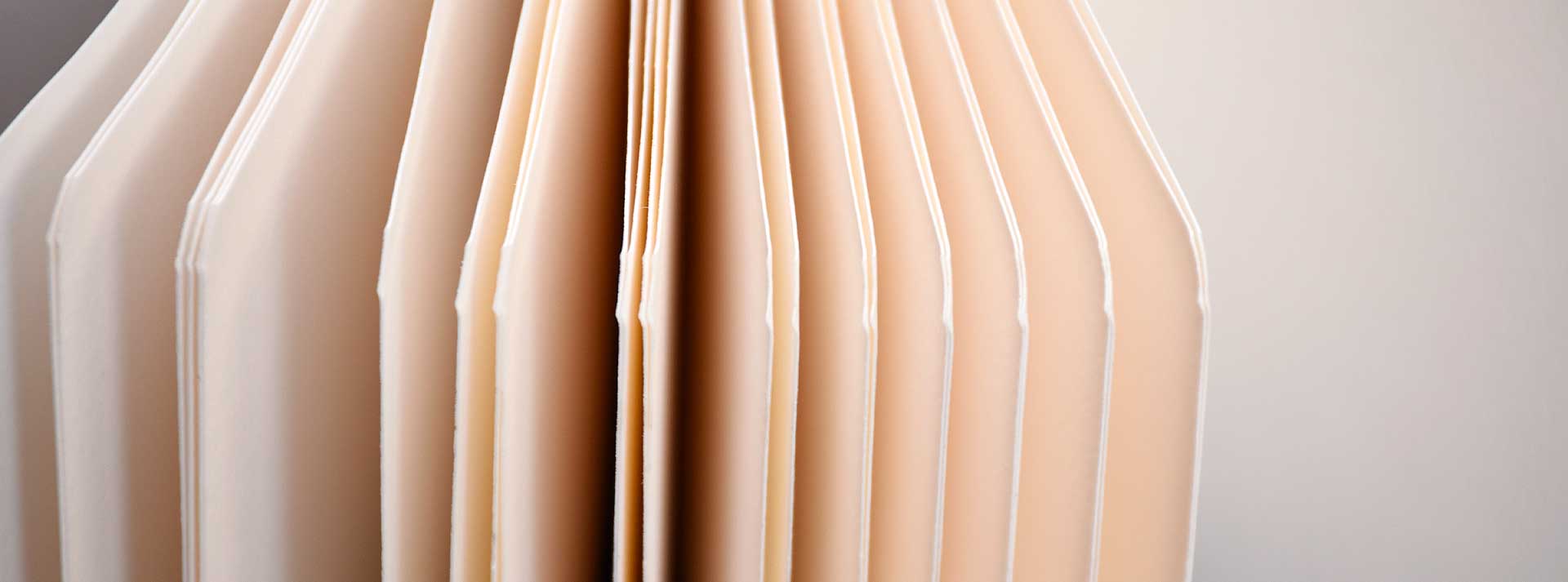 |
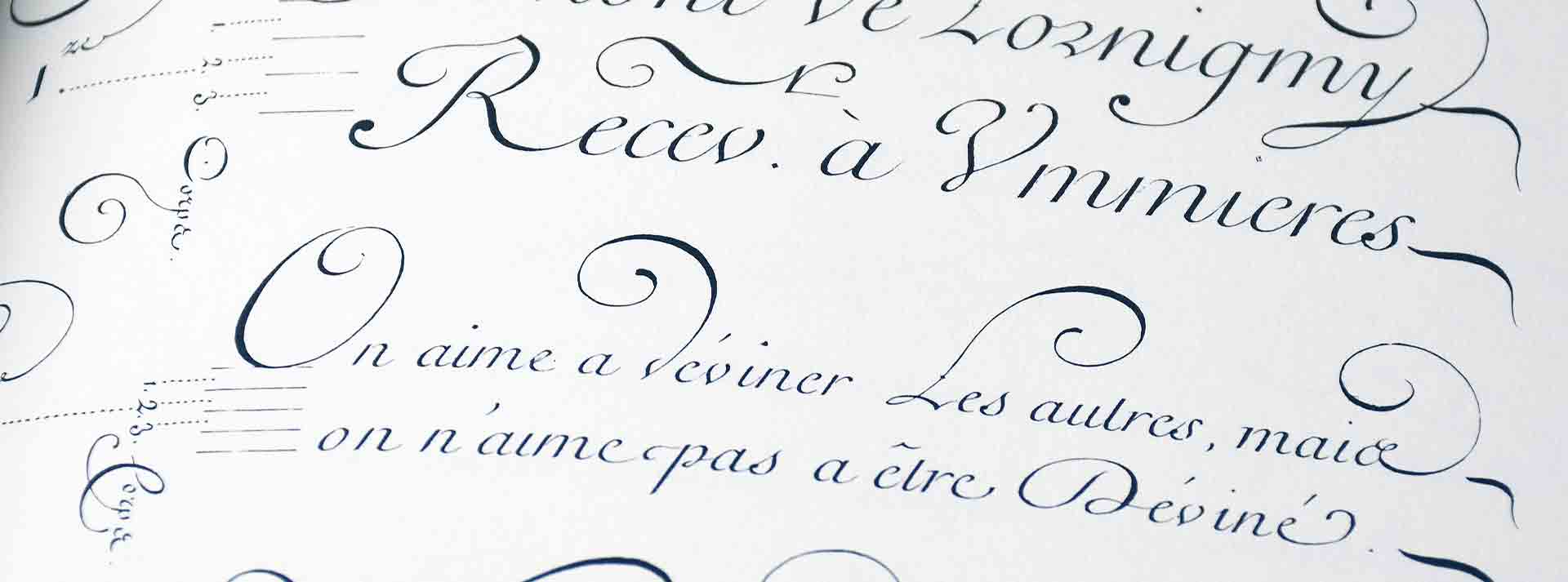 |
There is a wide choice of paper ranging from industrial paper to handcrafted sheet paper. To write well it is important to use good quality paper at the risk of seeing the ink bleed.
It is best to start with a high quality pad of paper. The thickness is also important, but it varies from one manufacture to another. We can have extremely fine bible paper of remarkable quality for example.
Also to write straight, it is necessary to create a line puller that we will slide behind each sheet. If the paper is too thick, it is essential to create lines using a ruler and a pencil without pressing too hard in order to erase the lines when the ink is quite dry. Some people will prefer papers with lines or small squares.
Also it is important to have a desk pad or to put several sheets of paper on top of each other in order to have a soft thickness under the sheet. It is indeed more difficult to write on a sheet of paper directly placed on a glass or wooden table!
